Scaffolding Rental Leicester
Best Rent Scaffolding in Leicester
Get 3 FREE Temporary Scaffolding quotes for your project today! Compare profiles, reviews, accreditations, portfolio, etc... and choose the best offer.
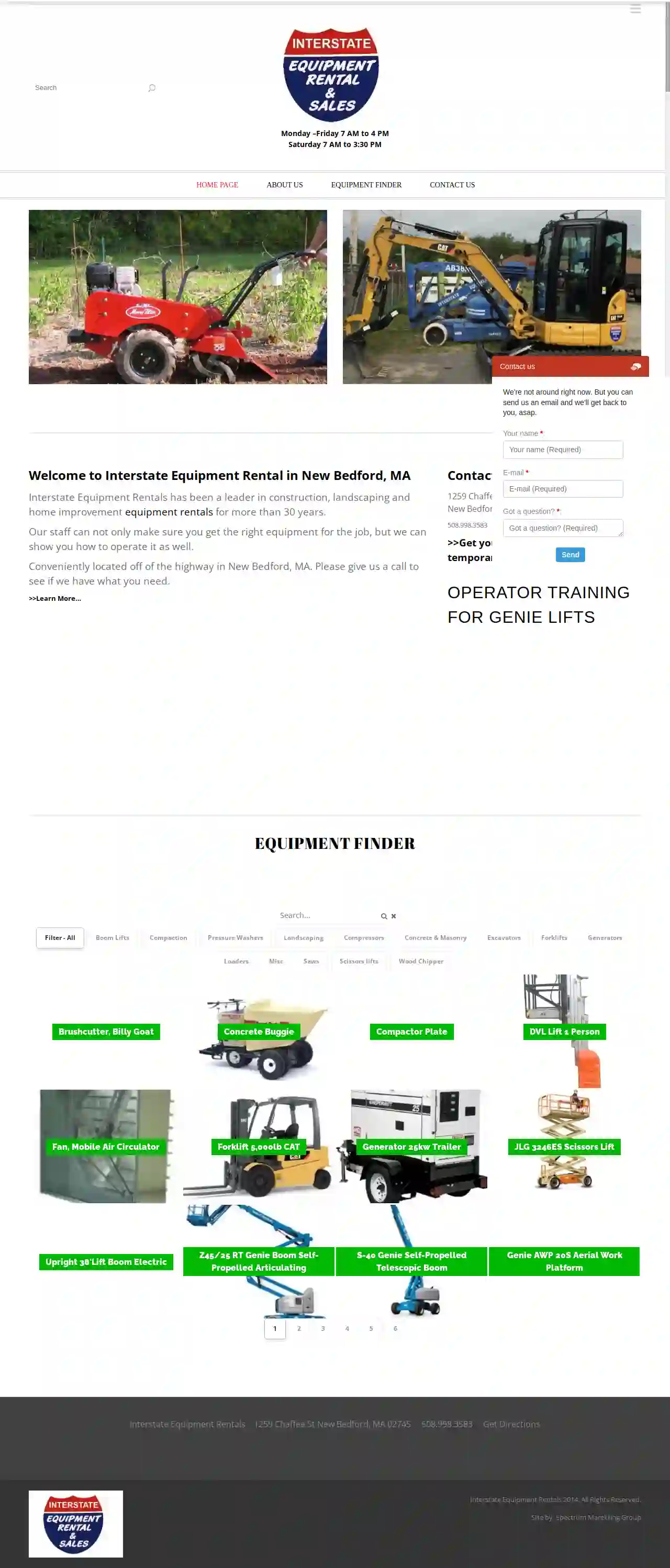
Interstate Equipment Rental & Sales
4.327 reviews1259 Chaffee St, New Bedford, 02745, USWelcome to Interstate Equipment Rental in New Bedford, MA. Interstate Equipment Rentals has been a leader in construction, landscaping and home improvement equipment rentals for more than 30 years. Our staff can not only make sure you get the right equipment for the job, but we can show you how to operate it as well. Conveniently located off of the highway in New Bedford, MA. Please give us a call to see if we have what you need.
- Services
- Why Us?
- Gallery
Get Quote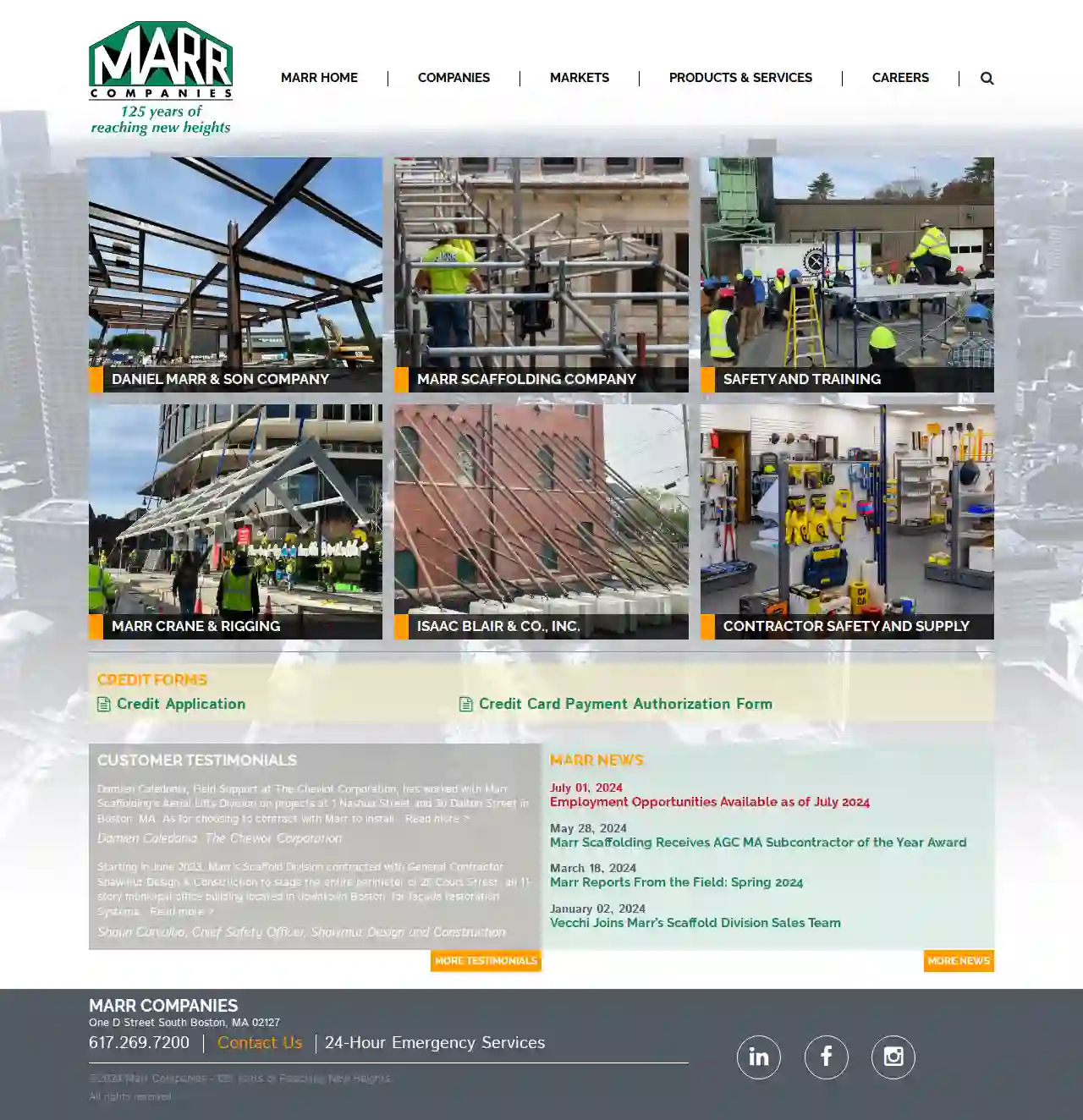
Marr Scaffolding Company
4.421 reviewsBoston, MA, 1 D Street, 02127, USMarr Companies is a leading provider of safety and training solutions, with over 125 years of experience in the industry. Our mission is to provide top-notch services to our clients, ensuring their safety and well-being. We offer a wide range of services, including aerial lifts, aluma joists, angel's wings, bleachers, boom lifts, bracing, building remediation, calibrated jacking, chutes, column replacement, contractor's safety and supply warehouse, construction elevators, cranes, dryair, elevators, emergency services, enclosures, environmental work, erection and dismantling, fall protection products, grandstands, ground thaw, heat wagon, hi-lite, hoists, hydro mobile, ladders, lulls, mast-climbing work platforms, needle shoring, plank, post shores, precast erection, pre-construction planning, redi-fence, rigging, safety, safety products, scaffolding, scissor lifts, sectional scaffold, shore-x, shoring, sidewalk protection, specialty shoring, specialty rigging, steel erection, suspended scaffolds, systems scaffold, temporary heat, temporary seating, trucking, wall bracing, and warehousing. Our team of experts is dedicated to providing the highest level of service and support to our clients. We are fully accredited and insured, and we take pride in our work. We are committed to reaching new heights and providing the best possible solutions to our clients.
- Services
- Why Us?
- Accreditations
- Our Team
- Testimonials
- Gallery
Get Quote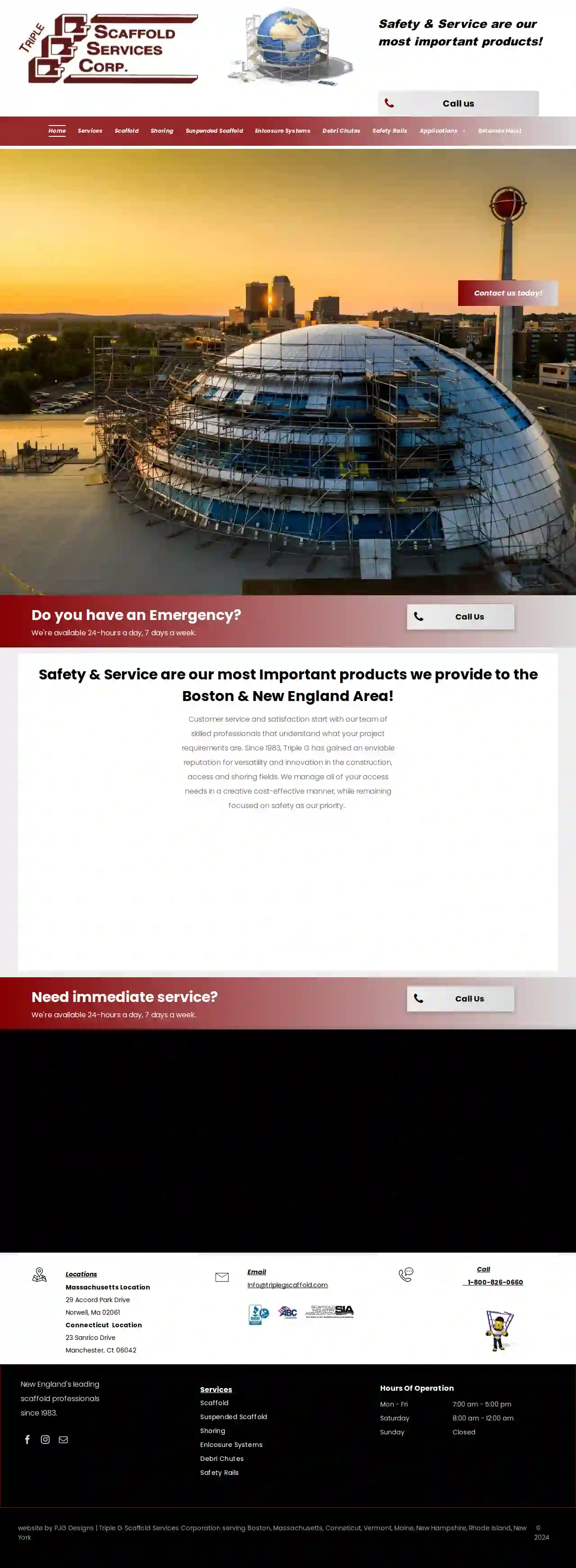
Triple G Scaffold Services Corporation
4.610 reviews29 Accord Park Drive, Norwell, 02061, USSafety & Service are our most important products! Call us Safety & Service are our most Important products we provide to the Boston & New England Area! Customer service and satisfaction start with our team of skilled professionals that understand what your project requirements are. Since 1983, Triple G has gained an enviable reputation for versatility and innovation in the construction, access and shoring fields. We manage all of your access needs in a creative cost-effective manner, while remaining focused on safety as our priority.
- Services
- Why Us?
- Gallery
Get Quote
Lynn Ladder & Scaffolding Co., Inc.
4.36 reviewsLynn, MA, 654 Chestnut St, 01904, USLynn Ladder & Scaffolding has been a family-owned business since 1946. Founded by Bernie Kline, the company has been dedicated to providing high-quality ladders and scaffolding to contractors in the New England area. Today, the third generation of Kline's continues to pursue this goal across the Eastern United States. With a focus on service and quality, Lynn Ladder strives to provide reasonably priced, high-quality products in a timely manner. The company offers a range of products, including frame scaffold, stages and planks, van and truck racks, ladders, hydro mobile, system scaffold, alum-a-pole, shoring, debris chutes, fall protection, swing stage, and more. With over 65 years of service, Lynn Ladder has established itself as a trusted provider of rental equipment and specialty products. The company's qualified employees can handle the scaffold needs of contractors, both large and small, and offer safety training programs to ensure the well-being of employees and customers. At Lynn Ladder, the employees are the most valuable asset, making up the heart of the company. From warehouse crews to corporate staff, each and every one of them is essential to the company's success.
- Services
- Why Us?
- Accreditations
- Gallery
Get Quote
Lynn Ladder & Scaffolding Co., Inc.
3.813 reviewsLynn, MA, USLynn Ladder was founded in 1946 by Bernie Kline. Bernie’s mission was to provide Ladders and Scaffolding to contractors in the New England area. Today, the third generation of Kline’s continue to pursue that goal across the Eastern United States. Service and quality are paramount in this endeavor. At each of the Lyn-Lad companies, we strive to provide each of our customers with reasonably priced, high quality products in a timely manner.
- Services
- Why Us?
- Accreditations
- Gallery
Get Quote
Skyway Canada LTD
850 Carpenters Crossing, Folcroft, 19032, USAt Skyway Canada, we pride ourselves on being a leading provider of industrial and commercial services. With a rich history and a strong mission to deliver exceptional results, we have established ourselves as a trusted partner for businesses across Canada and the United States. Our team of experienced professionals is dedicated to providing top-notch services, including industrial scaffolding, insulation, painting and protective coating, fireproofing, abatement, rope access, and more. We also offer commercial services such as access scaffolding, swing stage, shoring, fencing, hoardings, and debris chutes. At Skyway Canada, we are committed to safety and quality. We are proud members of various industry associations and have received numerous accreditations, including Avetta safe auditing and Complyworks. Our team is dedicated to providing exceptional service and ensuring that our clients are completely satisfied with our work.
- Services
- Why Us?
- Accreditations
- Gallery
Get Quote
Lynn Ladder & Scaffolding Co., Inc.
4.253 reviews25 Fordham Rd, Lynn, 01902, USLynn Ladder was founded in 1946 by Bernie Kline with a mission to provide ladders and scaffolding to contractors in the New England area. Today, the third generation of Kline's continue to pursue that goal across the Eastern United States. Service and quality are paramount in this endeavor. At each of the Lyn-Lad companies, we strive to provide each of our customers with reasonably priced, high quality products in a timely manner. One of the main focuses of our company is rental equipment. This is backed by over 45 years of scaffolding experience. Our qualified employees can handle the scaffold needs of contractors, both large and small. Our services range from engineering to manufacturing specialty products that are required by contractors to complete their jobs. We continue to manufacture many products in the United States. This provides many local jobs and allows us to make different custom products with a quick turnaround, giving us a competitive edge. Safety is always a factor in renting and selling the many products we manufacture and distribute. Lyn-Lad has offered safety training programs for many years. We will continue to do so for the safety of our employees and customers. It is our employees that comprise our most valuable asset at the Lyn –Lad companies. Each and every one of them makes up the heart of the Lyn-Lad Companies. From our warehouse crews to our corporate staff, we could not succeed without them.
- Services
- Why Us?
- Accreditations
- Gallery
Get Quote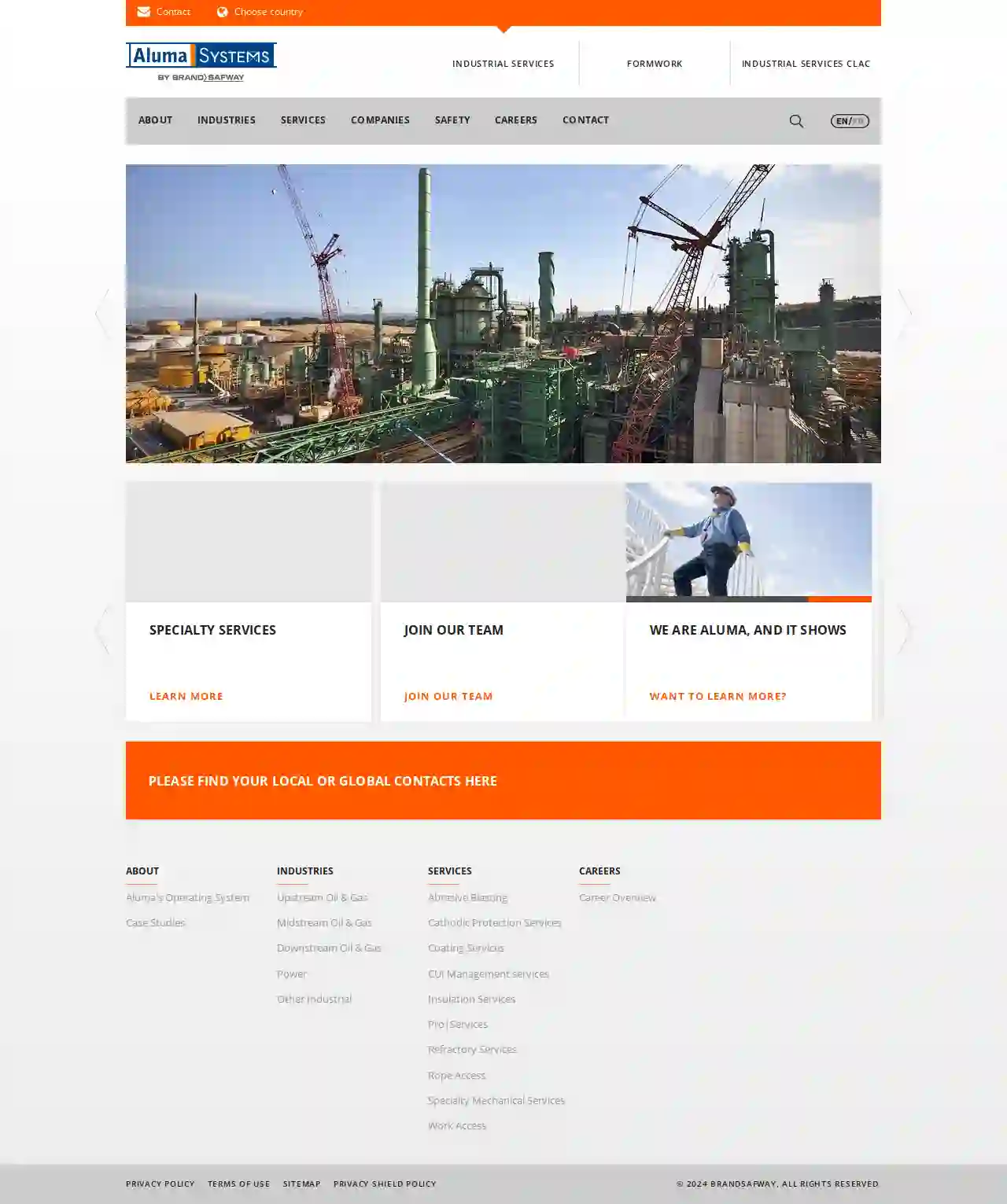
Aluma Systems (Industrial Services)
450 reviewsLynn, USAt Aluma Systems, we are a premier provider of integrated specialty services to the global energy, industrial and infrastructure markets. Our extensive portfolio of specialized industrial service offerings includes scaffolding, coatings, insulation, refractory, formwork and shoring, specialty mechanical services, and other related crafts. With an award-winning safety record and in-depth policies, systems and programs designed to engage the entire workforce in the delivery of safe work on all projects, we believe Aluma is more than a company with a great safety program...Aluma is a safe company.
- Services
- Why Us?
- Gallery
Get Quote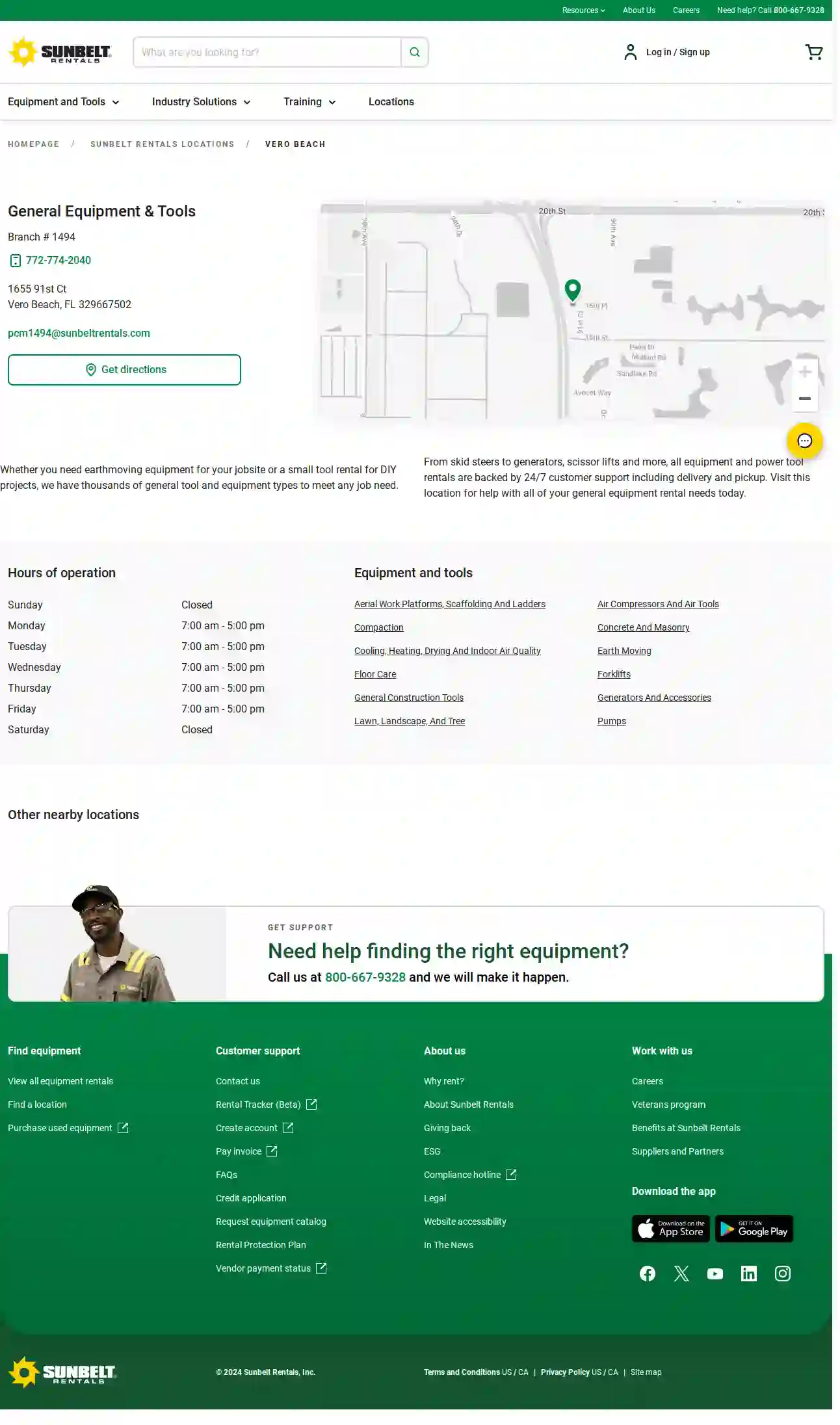
Sunbelt Rentals
4.810 reviews1234 Equipment Lane, Vero Beach, 32960, USSunbelt Rentals is a leading equipment rental company offering a wide range of aerial work platforms, scaffolding, ladders, cranes, boom trucks, and more. With a strong commitment to customer support, they provide assistance in finding the right equipment and offer various resources such as FAQs, rental tracker, and a customer support hotline. Sunbelt Rentals also prioritizes giving back to the community and has a strong focus on environmental, social, and governance (ESG) practices.
- Services
- Why Us?
- Accreditations
- Our Team
- Testimonials
- Gallery
Get Quote
Boxx Scaffolding
51 reviews2769 Stonegate Ct, Hiawatha, 52233, USAt Boxx Scaffolding, we pride ourselves on being a reliable and customer-focused commercial scaffolding company in Cedar Rapids, IA. With a mission to be leaders and innovators in the scaffolding field, we prioritize our clients' needs above all. Our team is committed to providing exceptional service, ensuring safety on the job, and building lasting relationships with our clients. As a state-licensed scaffolding company, we offer a wide range of services, including system scaffolding, tube and clamp scaffolding, commercial scaffolding, industrial scaffolding, erect, dismantle, and modify on-site, maintenance, outages, and turnaround. Our team is dedicated to providing top-notch service, and we take pride in our ability to handle any system scaffolding job. At Boxx Scaffolding, we understand the importance of safety, and we take it very seriously. Our employees have undergone rigorous safety training, and we take various precautions on-site to ensure a safe working environment. We're equipped with the best harnesses, safety ropes, shock absorbers, and more to keep the worksite as safe as it can be. With over 45 years of combined experience, we're committed to building and maintaining client relationships. We want to be your go-to commercial scaffolding company in Cedar Rapids, IA. Contact us today for a free estimate, and let's get started on your next project.
- Services
- Why Us?
- Accreditations
- Gallery
Get Quote
Over 2,353+ Scaffolding Companies registered
Our scaffolding companies operate in Leicester and surrounding areas!
ScaffoldingHQ has curated and vetted Top Scaffolding Companies arround Leicester. Find the most reliable business today.
Frequently Asked Questions About Scaffolding Rental
- Base Plates and Adjusters: Use adjustable base plates to level the scaffolding legs on uneven surfaces.
- Ground Preparation: Level the ground as much as possible before erection.
- Bracing and Support: Additional bracing and support may be necessary to compensate for uneven ground conditions.
- Professional Assessment: A qualified scaffolding erector should assess the ground and determine the appropriate measures for safe erection.
- Underestimating Scaffolding Needs: Accurately assess the required scaffolding size and type.
- Not Comparing Quotes: Get quotes from multiple rental companies to find the best deal.
- Ignoring Safety: Prioritize safety by hiring qualified erectors and ensuring workers follow safety protocols.
- Overlooking Permits: Obtain any necessary permits before erecting scaffolding.
- Not Inspecting the Scaffolding: Carefully inspect the scaffolding upon delivery and before each use.
- Modifying Scaffolding without Authorization: Never alter the scaffolding without consulting the rental company or an engineer.
- Online Directories: ScaffoldingHQ is a specialized directory that connects you with reputable rental providers.
- Search Engines: Search for 'scaffolding rental [your location]' on Google or other search engines.
- Local Business Listings: Check local business listings, such as Yelp or Yellow Pages, for scaffolding rental companies.
- Word-of-Mouth Referrals: Ask contractors, builders, or friends for recommendations.
- Tube and Clamp: Capacity depends on the configuration and the strength of the components.
- System Scaffolding: Typically has higher load capacities due to its pre-engineered design.
- Mobile Towers: Have specific weight limits based on their size and model.
Can I use scaffolding on uneven ground?
What are some common mistakes to avoid when renting scaffolding?
How do I find scaffolding rental companies near me?
What are the weight limits for different types of scaffolding?
Can I use scaffolding on uneven ground?
- Base Plates and Adjusters: Use adjustable base plates to level the scaffolding legs on uneven surfaces.
- Ground Preparation: Level the ground as much as possible before erection.
- Bracing and Support: Additional bracing and support may be necessary to compensate for uneven ground conditions.
- Professional Assessment: A qualified scaffolding erector should assess the ground and determine the appropriate measures for safe erection.
What are some common mistakes to avoid when renting scaffolding?
- Underestimating Scaffolding Needs: Accurately assess the required scaffolding size and type.
- Not Comparing Quotes: Get quotes from multiple rental companies to find the best deal.
- Ignoring Safety: Prioritize safety by hiring qualified erectors and ensuring workers follow safety protocols.
- Overlooking Permits: Obtain any necessary permits before erecting scaffolding.
- Not Inspecting the Scaffolding: Carefully inspect the scaffolding upon delivery and before each use.
- Modifying Scaffolding without Authorization: Never alter the scaffolding without consulting the rental company or an engineer.
How do I find scaffolding rental companies near me?
- Online Directories: ScaffoldingHQ is a specialized directory that connects you with reputable rental providers.
- Search Engines: Search for 'scaffolding rental [your location]' on Google or other search engines.
- Local Business Listings: Check local business listings, such as Yelp or Yellow Pages, for scaffolding rental companies.
- Word-of-Mouth Referrals: Ask contractors, builders, or friends for recommendations.
What are the weight limits for different types of scaffolding?
- Tube and Clamp: Capacity depends on the configuration and the strength of the components.
- System Scaffolding: Typically has higher load capacities due to its pre-engineered design.
- Mobile Towers: Have specific weight limits based on their size and model.